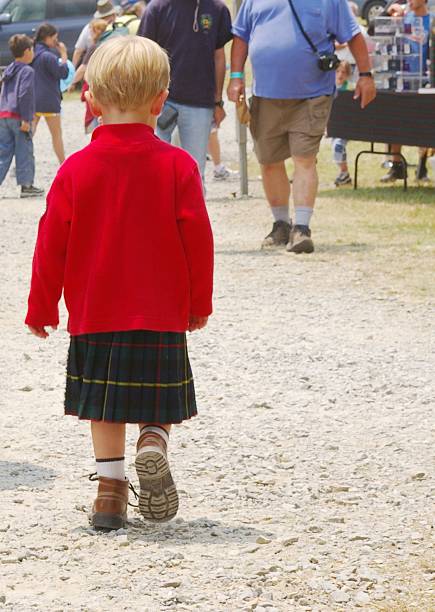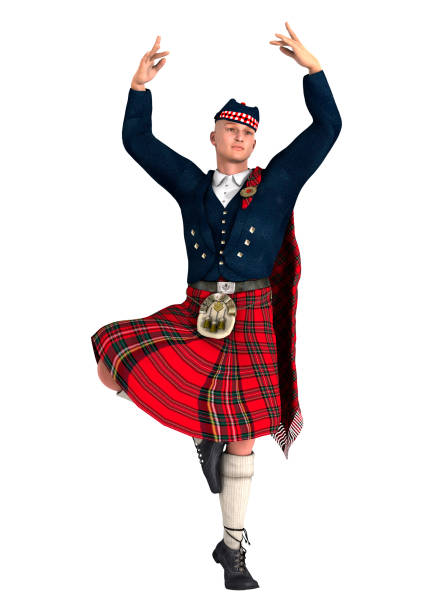Unveiling the Mystique of Kilts: Exploring The Purpose of wearing kilts
Step into the world of kilts, where tradition meets style in a remarkable display of Scottish heritage. These iconic garments have stood the test of time, captivating hearts and minds with their unique design and rich cultural significance. But what exactly is the purpose behind wearing a kilt? Is it just about showcasing ancestral pride, or does it serve a more profound meaning? Join us as we unravel the mysteries surrounding kilts and discover why they hold such an enduring allure.
Whether you envision rugged clan warriors marching across misty highlands or dapper gentlemen at formal gatherings, kilts have become synonymous with Scotland’s vibrant history. However, their use extends far beyond traditional dress; modern-day aficionados proudly sport these distinctive garments for various occasions. From weddings to festivals, military ceremonies to casual outings – kilts are versatile attire that transcends boundaries.
But let’s not merely scratch the surface – beneath its pleats lies a tapestry woven with centuries-old customs and beliefs. Delving into the cultural significance reveals fascinating insights into Scottish identity and values passed down through generations. So fasten your sporran (a small pouch traditionally worn with kilts) as we embark on our exploration!
Now that we’ve piqued your curiosity let’s dive deep into understanding how kilts were used in ancient times…
Traditional Uses of Kilts
Kilts have a rich history and have been integral to Scottish culture for centuries. Originally, kilts were worn as the traditional attire of Highland Scots. They served various practical purposes that made them ideal for the region’s rugged terrain and unpredictable weather conditions.
One of the primary uses of kilts was as a form of protection. The thick woollen fabric provided warmth during cold winters, while the length and weightiness ensured durability in challenging outdoor environments. Additionally, the tartan patterns on kilts were unique to each clan or family, serving as a visual representation of one’s heritage and allegiance.
In addition to their functional aspects, kilts also held significant cultural importance. They were often worn during special occasions, such as weddings or ceilidhs (traditional Scottish gatherings), showcasing pride in one’s Scottish roots. Furthermore, wearing a kilt symbolized masculinity and strength within Highland society.
Today, many people still wear kilts to embrace their Scottish heritage or participate in cultural events like Highland games or festivals. While no longer restricted solely to Scotland, kilts are appreciated worldwide for their timeless elegance and connection to tradition.
So whether you’re attending a formal event or want to stand out from the crowd with your distinctive style choice, wearing a kilt allows you to pay homage to tradition while making a bold fashion statement!
Modern-Day Use of Kilts
In recent years, kilts have experienced a resurgence in popularity as modern-day fashion statements. No longer confined to traditional Scottish events or formal occasions, people from all walks of life are now embracing kilts for their unique style and versatility.
One of the main reasons individuals choose to wear kilts today is simply because they enjoy the look and feel of this iconic garment. The kilt offers a refreshing alternative to conventional pants or trousers with its distinctive pleats and tartan patterns. It allows wearers to express their individuality and stand out from the crowd.
Kilts are also favoured by those who appreciate comfort and freedom of movement. Unlike restrictive pants, kilts provide ample room for legs to breathe, making them ideal for outdoor activities or casual outings. Whether hiking in rugged terrain or attending a music festival, wearing a kilt can offer both style and practicality.
Furthermore, kilts have become increasingly popular within various subcultures such as steampunk or gothic communities. These groups often incorporate kilts into their eclectic ensembles to embrace non-conformity and challenge societal norms surrounding gendered clothing choices.
It’s worth noting that some men also wear utility-style kilts with additional pockets and functional elements. These modern adaptations further enhance practicality while retaining the distinctive look of traditional tartan designs.
The modern-day use of kilts goes beyond tradition; it has evolved into a symbol of self-expression, comfort, versatility, and even rebellion against societal expectations regarding gendered clothing choices. As more individuals discover the appeal and benefits of wearing this timeless garment outside its traditional context, we expect to see even greater acceptance and inclusion in contemporary fashion trends.
Cultural Significance of Kilts
Kilts hold a deep cultural significance, particularly in Scotland. For centuries, they have been an emblem of Scottish identity and pride. The kilt is more than just a piece of clothing; it represents tradition, heritage, and the bond between generations.
In Scottish culture, kilts are often worn during special occasions such as weddings, festivals, or Highland games. They symbolize belonging to a specific clan or family lineage. Each tartan pattern on the kilt denotes a particular clan’s identity and history.
Kilts also play a vital role in celebrations like Hogmanay (Scottish New Year) and Burns Night (honouring poet Robert Burns). These events showcase the rich cultural heritage of Scotland, where kilts are proudly displayed alongside traditional bagpipe music and ceilidh dancing.
Furthermore, kilts are essential to national dress for formal occasions such as military parades or ceremonies. In these settings, they represent bravery and honour within Scottish regiments.
The cultural significance extends beyond Scotland’s borders, too. Kilts have become synonymous with Scottish culture worldwide due to their distinctive appearance and historical connections.
The cultural significance of kilts cannot be understated. They embody tradition while promoting unity among Scots both at home and abroad.
Benefits of Wearing a Kilt
Comfort is critical when it comes to wearing a kilt. Unlike other types of clothing, kilts are made from lightweight and breathable materials, allowing for maximum comfort even on the warmest days. The free-flowing design of the kilt provides ample room for movement, making it perfect for activities such as dancing or hiking.
In addition to comfort, kilts also offer versatility in style. With various tartans available, you can choose one representing your family heritage or personal taste. This allows you to express your individuality while still embracing tradition.
Another benefit of wearing a kilt is its practicality. Kilts usually have deep pockets, handy for carrying small essentials like keys or a wallet. Additionally, many kilts feature adjustable straps at the waistband, ensuring a secure fit regardless of size or shape.
Furthermore, there’s something undeniably empowering about wearing a kilt. This garment’s unique look and feel often invite compliments and curiosity from others around you. It’s not uncommon to strike up interesting conversations with strangers intrigued by your attire.
Wearing a kilt can be seen as cultural appreciation and celebration. By donning this traditional Scottish garment, you pay homage to centuries-old traditions and honour its rich history.
Whether you wear a kilt for its comfort, style versatility, practicality, empowerment factor or cultural significance – one thing is sure: putting on a kilt adds an element of uniqueness and charm that sets you apart from the crowd!
How to Wear a Kilt Correctly
Wearing a kilt is not just about putting on a piece of clothing; it’s about embracing tradition and culture. Here are some essential guidelines to ensure you wear your kilt correctly.
Make sure the pleats are at the back. This may seem obvious, but it is essential to wear a kilt properly. The pleats should be centred at the back and neatly folded.
Next, fasten the buckles or straps securely around your waist. The kilt must sit comfortably on your hips without being too tight or loose. Adjust accordingly for the perfect fit.
When it comes to length, tradition dictates that kilts should fall to just above or below the knee. However, personal preference can also come into play here – some individuals prefer slightly longer or shorter kilts.
To complete your traditional Highland look, pair your kilt with accessories such as a sporran (a small pouch worn at the front), hose (knee-length socks), ghillie brogues (traditional Scottish shoes), and a sgian-dubh (a small knife tucked in your sock).
Remember that wearing a kilt is more than just donning an outfit; it represents heritage and identity. You can genuinely embody its purpose and significance by following these guidelines and embracing this cultural attire with respect and pride.
The Debate Around Men Wearing Skirts
There has been a growing debate surrounding men wearing skirts in recent years. While some view it as a bold fashion statement and a way to break free from traditional gender norms, others see it as inappropriate or even emasculating.
Those favouring men wearing skirts argue that gender stereotypes should not limit clothing. They believe everyone should be free to express themselves through their wardrobe choices without fear of judgment or discrimination.
On the other hand, critics argue that skirts are traditionally associated with femininity and that men wearing them goes against societal norms. They worry that this blurring of gender lines may lead to confusion or even undermine traditional masculinity.
Despite the ongoing debate, many designers and fashion brands have embraced the concept of “gender-neutral” clothing, including skirts for men. This trend reflects society’s evolving attitudes towards gender and encourages individuals to explore their style without limitations.
Whether or not men choose to wear skirts is a personal decision. It is up to each individual to decide how they want to present themselves and what makes them feel comfortable and confident in their skin.
As society becomes more accepting and open-minded about diverse expressions of identity, the conversation around men wearing skirts will continue to evolve.
Conclusion- What is the purpose of wearing kilts?
The purpose of wearing kilts goes beyond mere fashion or style. Kilts hold a rich cultural significance and heritage, representing Scottish tradition and identity. While they were historically worn for practical reasons such as mobility and versatility in harsh weather conditions, the modern-day use of kilts has expanded to include formal events, weddings, festivals, and even everyday wear.
Wearing a kilt allows individuals to connect with their roots and offers numerous benefits. The freedom of movement provided by kilts is unmatched by other types of clothing. Additionally, the natural materials used in traditional kilts allow for breathability and comfort.
Knowing how to wear a kilt correctly is essential to maintain its authenticity and honour its history. Each step contributes to preserving this cherished garment’s integrity, from choosing the correct tartan pattern to properly fastening the belt buckle.
While some may debate whether men should wear skirts, it’s essential to recognize that kilts are more than just “skirts.” They carry deep cultural meaning that should be respected rather than misunderstood or dismissed based on arbitrary gender norms.
Whether you don a kilt for special occasions or incorporate it into your daily wardrobe, embracing this iconic piece of clothing can provide both personal satisfaction and an opportunity to celebrate Scottish heritage.
So next time you see someone confidently sporting their kilt with pride, remember there is far more behind those wrinkles than meets the eye!











